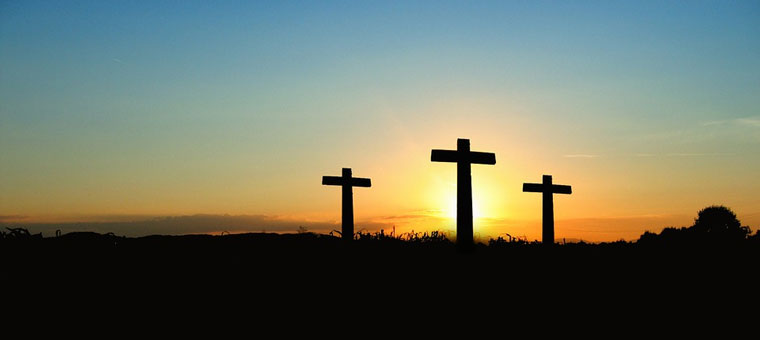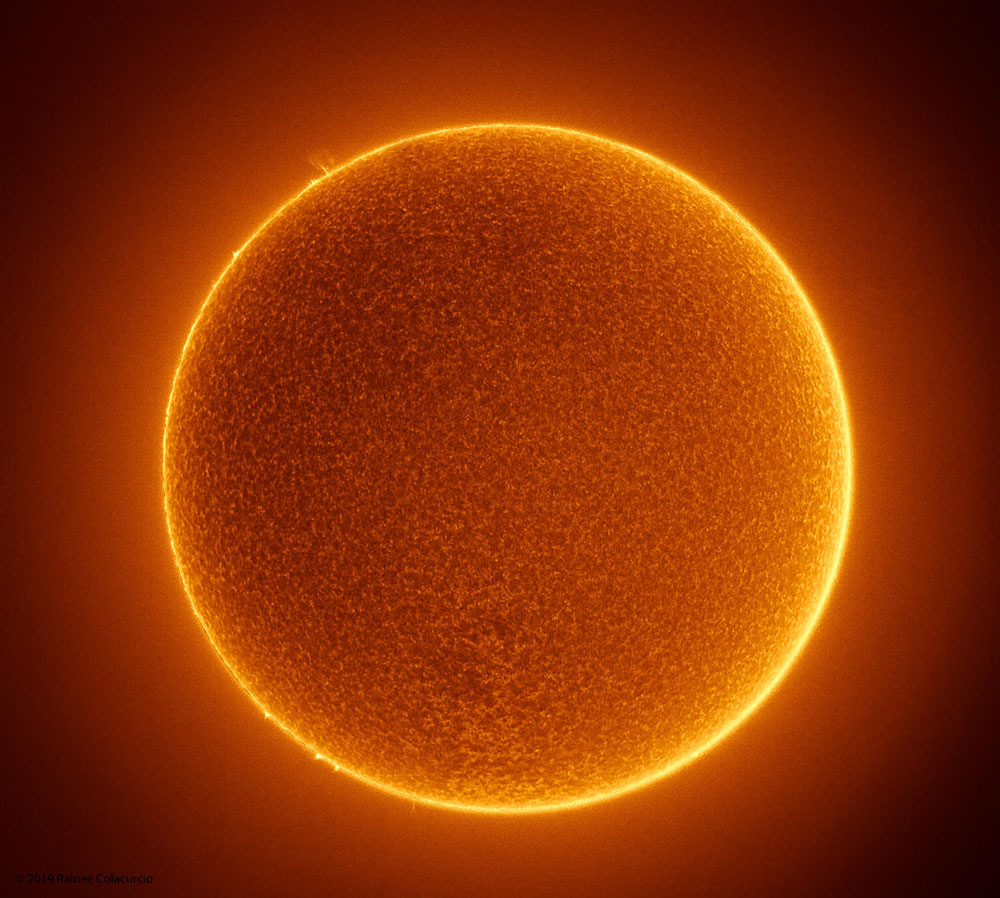Seeing the solar eclipse in a new light

In the beginning God created the heavens and the earth (Genesis 1:1), and, “The heavens declare the glory of God, and the sky above proclaims His handiwork” (Psalm 19:1). So, when it comes to that unique phenomenon, the solar eclipse, is there something else it could be telling us? Many false religions and superstitions see it, erroneously, as some sort of omen of death and destruction. But we can draw a powerful spiritual meaning from this spectacular phenomenon.
On the first day of creation darkness was over the surface of the deep, and God simply said, “Let there be light,” and there was light. Light is the opposite of darkness, and God said that the light was good (Genesis 1:2–5).
Two great lights
On the fourth day God created lights in the expanse of the heavens. Their purpose was to give light on the earth to separate the day from the night; for signs; for seasons; for days; and for years. He made the two great lights, the greater light to rule the day, and the lesser light to rule the night. Earth was the focus and the purpose for the lights (Genesis 1:14–19).
Of course, we understand that the two great lights are the sun and the moon. Physically speaking, the sun and the moon both rule the movement of the earth. The earth would fly off into space were it not for the gravity of the sun. The moon’s gravity governs not only the stability of the earth on its axis, but also the tides and with them the upwelling of nutrients from the ocean floor, and even currents in the ocean.
They also rule the activity of life on Earth. Man typically works by day and rests by night. Sunset generally determines the departure time of birds which migrate nocturnally, and moths and other insects orient themselves by the moon at night.
Two great covenants
Here, though, we want to focus our attention on spiritual illustration and application. Leading up to the matter of the eclipse, we will consider the way in which the moon rules the night and the sun rules the day. God has progressively revealed His will and made promises to man in great covenants. Two of them are simply called the Old Covenant and the New Covenant (Jeremiah 31:31–34). Like the two great lights in the heavens, these two great covenants have provided spiritual light to rule the behaviour of mankind.
The Old Covenant, given to the children of Israel, is known as the Law of Moses or simply, the Law or Torah (Hebrews 8:8–12, which cites the Jeremiah passage).
The New Covenant is the covenant inaugurated by Jesus Christ. He Himself is so much the centre and substance of the New Covenant that there could be no New Covenant without Jesus. He is Himself the Greater Light, or, in His own words, the “light of the world” (John 8:12), just as the sun of our solar system is the light of our world. And like the order of the biblical day—evening to morning1—the time when the lesser light rules the night acts as a tutor (Galatians 3:24) to lead us to the time when the greater light rules the day.
As dissimilar as the two times of the day over which they rule, the two great lights are likewise as different as night and day. The sun has light within itself; the moon’s light is merely a reflection of the light of the sun. The sun is so bright that, just as man cannot stare directly at God and live (Exodus 33:20), one cannot stare at the sun without going blind; staring at the moon is harmless.
The sun’s light displays the full multicoloured glory of God’s creation; objects in the moonlight, however, like the impersonal, impartial justice of the Law, appear black-and-white. The sun warms the earth; the moon gives no warmth.
As Jesus Christ, who has life within Himself (John 5:26), gives life to all things (1 Timothy 6:13), so the sun has within itself everything that gives life to all the earth; the Law, however, condemns sinful man to death. This “ministry of death” (2 Corinthians 3:6–9) leads men to the greater Light who gives life.
Eclipsing the light

Something unique within our solar system happens at a solar eclipse. It ‘just so happens’ that the Earth’s only moon is set in space at precisely the right distance to make it appear to us to be the same size as the sun. At a total solar eclipse we see the moon begin to cover the sun. Broad daylight becomes almost as dark as night, and the temperature can drop by about 15 Celsius degrees (28 Fahrenheit degrees).2 Birds and animals go silent.
At the Last Supper, what Jesus referred to as the “hour of darkness” began when Judas left to betray Him. He went out, and it was night. Jesus continued to explain to His disciples that the wine they were sharing at the Passover meal would from then on represent Jesus’ blood of the New Covenant.3 At the end of the meal Jesus spoke to His Father, God, saying His hour had come (John 17:1).
The weight of sin
Jesus headed out to the garden at the foot of the Mount of Olives named Gethsemane. Gethsemane was a word meaning “oil press.” As heavier and heavier weights were applied to a gethsemane, the oil would be pressed out of the olives in a bag and collected. Here, the weight of the sins of the world began to weigh so heavily upon Jesus’ shoulders that He began to sweat “like great drops of blood” (Luke 22:44). He asked His Father to let this date with destiny pass from Him if it was in any way possible (Luke 22:42). But, it was not. It had to happen this way. This burden of sin that was being laid upon Him was producing the oil of His anointing as Messiah.
Jesus went into the darkness to meet His betrayer. All through the darkness of night Jesus was put through mock trials and turned over to the Roman governor, Pilate, for daring to claim that He was the Messiah. Then, betrayed, denied, deserted, mocked, beaten, spit upon, and with His back laid bare by flogging, the Roman soldiers wove a crown of thorns and stuck it on his head (Matthew 26:45–27:31). By 9 o’clock the morning after He had taken His last supper with His disciples, He was being nailed to a cross (Mark 15:25).

Just as the dark moon passing in front of the sun at the solar eclipse can make the brightness of midday seem like night, a darkness like night fell over the land from noon to 3 pm (Mark 15:33). (This preternatural darkness was, however, not a solar eclipse, because that is impossible during the full moon of Passover.) The debt of all the sins of the world was being laid to the account of Jesus Christ as though He had committed them (Isaiah 53:6). The darkness of that sin began to pass over the Light of the world until it completely eclipsed the Light. Jesus cried out in a loud voice, “My God, My God, why have You forsaken Me?” (Matthew 27:46, citing Psalm 22:1). The Greeks viewed an eclipse of any sort as light forsaking a heavenly body. Though Jesus did not cry out in Greek, the Greek word in the NT translated ‘forsaken’ in English is related to the word from which we get our English word ‘eclipsed’
Then He cried out, “It is finished!” (John 19:30), which in the Greek is one word, “tetelestai!”. This was written over bills of debt when they were completely paid up. The sins of the world had been paid in full, nailed to the cross (Colossians 2:14).
Darkness revealing crowning glory
At the point of full solar eclipse something truly phenomenal happens: the corona is seen (fig. 1). That word, ‘corona’, is Latin meaning, ‘crown’ (the notorious coronavirus causing so many problems around the world means ‘crown-shaped virus’). Before His crucifixion, sinful men thrust a crown of thorns into His head. Three days after the God-man had given His life to redeem sinful men, He rose from the dead.4 He ascended into heaven,5 where He was crowned with glory and honour (Hebrews 2:9), and ever since, He sits as King of kings and Lord of lords6 at the right hand of God the Father Almighty.7
But, as it says in the beginning chapter of John, the darkness did not overcome the Light (John 1:5). In an actual eclipse, the moon keeps moving on, the brightness of midday returns, and the Greater Light once again rules the day. The solar eclipse can be used to illustrate the crucifixion of Jesus Christ, the day the darkness of death eclipsed the Light of the world, the debt of the sins of mankind was completely paid, and Jesus was crowned with all glory and honor. This is the new light. This is the perpetual testimony of the solar eclipse.
References and notes
- Genesis 1:5, 8, 13, 19, 23, 31. Return to text.
- Cofield, C., Brrr! How Much Can Temperatures Drop During a Total Solar Eclipse? space.com, 17 Jun 2017. Return to text.
- Luke 22:20; 2 Corinthians 11:25–26. Return to text.
- Acts 10:38–43; 1 Corinthians 15:3–4 Return to text.
- Acts 1:9; Ephesians 4:9-10 Return to text.
- 1 Timothy 6:14–16; Revelation 19:11–16 Return to text.
- Mark 16:19; Luke 22:69–70; Colossians 3:1; Hebrews 10:12; 12:2; 2 Peter 3:21–22 Return to text.




Readers’ comments
Comments are automatically closed 14 days after publication.